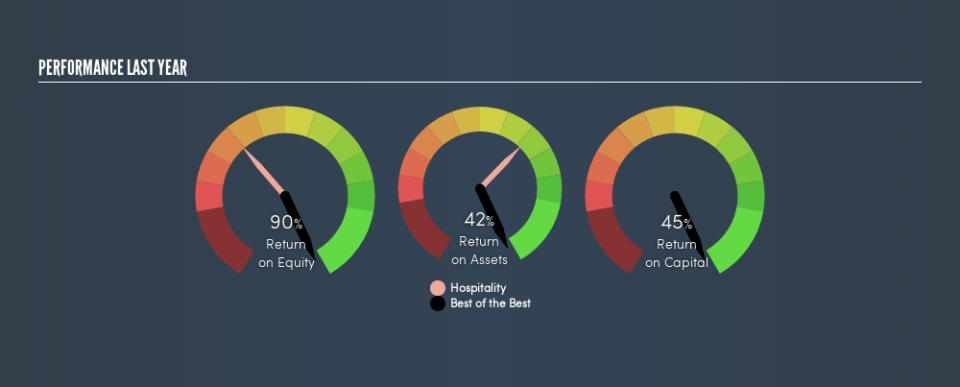Should You Like Best of the Best PLC’s (LON:BOTB) High Return On Capital Employed?

Want to participate in a short research study? Help shape the future of investing tools and you could win a $250 gift card!
Today we are going to look at Best of the Best PLC (LON:BOTB) to see whether it might be an attractive investment prospect. Specifically, we're going to calculate its Return On Capital Employed (ROCE), in the hopes of getting some insight into the business.
First up, we'll look at what ROCE is and how we calculate it. Then we'll compare its ROCE to similar companies. Finally, we'll look at how its current liabilities affect its ROCE.
Return On Capital Employed (ROCE): What is it?
ROCE is a measure of a company's yearly pre-tax profit (its return), relative to the capital employed in the business. All else being equal, a better business will have a higher ROCE. Ultimately, it is a useful but imperfect metric. Renowned investment researcher Michael Mauboussin has suggested that a high ROCE can indicate that 'one dollar invested in the company generates value of more than one dollar'.
So, How Do We Calculate ROCE?
Analysts use this formula to calculate return on capital employed:
Return on Capital Employed = Earnings Before Interest and Tax (EBIT) ÷ (Total Assets - Current Liabilities)
Or for Best of the Best:
0.45 = UK£1.7m ÷ (UK£8.3m - UK£4.5m) (Based on the trailing twelve months to October 2018.)
Therefore, Best of the Best has an ROCE of 45%.
Check out our latest analysis for Best of the Best
Does Best of the Best Have A Good ROCE?
One way to assess ROCE is to compare similar companies. Using our data, we find that Best of the Best's ROCE is meaningfully better than the 8.3% average in the Hospitality industry. We would consider this a positive, as it suggests it is using capital more effectively than other similar companies. Regardless of the industry comparison, in absolute terms, Best of the Best's ROCE currently appears to be excellent.
When considering this metric, keep in mind that it is backwards looking, and not necessarily predictive. Companies in cyclical industries can be difficult to understand using ROCE, as returns typically look high during boom times, and low during busts. ROCE is only a point-in-time measure. You can check if Best of the Best has cyclical profits by looking at this free graph of past earnings, revenue and cash flow.
Do Best of the Best's Current Liabilities Skew Its ROCE?
Liabilities, such as supplier bills and bank overdrafts, are referred to as current liabilities if they need to be paid within 12 months. The ROCE equation subtracts current liabilities from capital employed, so a company with a lot of current liabilities appears to have less capital employed, and a higher ROCE than otherwise. To counteract this, we check if a company has high current liabilities, relative to its total assets.
Best of the Best has total assets of UK£8.3m and current liabilities of UK£4.5m. As a result, its current liabilities are equal to approximately 54% of its total assets. While a high level of current liabilities boosts its ROCE, Best of the Best's returns are still very good.
Our Take On Best of the Best's ROCE
So we would be interested in doing more research here -- there may be an opportunity! There might be better investments than Best of the Best out there, but you will have to work hard to find them . These promising businesses with rapidly growing earnings might be right up your alley.
If you like to buy stocks alongside management, then you might just love this free list of companies. (Hint: insiders have been buying them).
We aim to bring you long-term focused research analysis driven by fundamental data. Note that our analysis may not factor in the latest price-sensitive company announcements or qualitative material.
If you spot an error that warrants correction, please contact the editor at editorial-team@simplywallst.com. This article by Simply Wall St is general in nature. It does not constitute a recommendation to buy or sell any stock, and does not take account of your objectives, or your financial situation. Simply Wall St has no position in the stocks mentioned. Thank you for reading.

